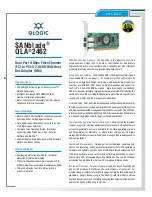
Appendix B Wireless LANs
NWD271N User’s Guide
106
For EAP-TLS authentication type, you must first have a wired connection to the network and
obtain the certificate(s) from a certificate authority (CA). A certificate (also called digital IDs)
can be used to authenticate users and a CA issues certificates and guarantees the identity of
each certificate owner.
EAP-MD5 (Message-Digest Algorithm 5)
MD5 authentication is the simplest one-way authentication method. The authentication server
sends a challenge to the wireless client. The wireless client ‘proves’ that it knows the password
by encrypting the password with the challenge and sends back the information. Password is
not sent in plain text.
However, MD5 authentication has some weaknesses. Since the authentication server needs to
get the plaintext passwords, the passwords must be stored. Thus someone other than the
authentication server may access the password file. In addition, it is possible to impersonate an
authentication server as MD5 authentication method does not perform mutual authentication.
Finally, MD5 authentication method does not support data encryption with dynamic session
key. You must configure WEP encryption keys for data encryption.
EAP-TLS (Transport Layer Security)
With EAP-TLS, digital certifications are needed by both the server and the wireless clients for
mutual authentication. The server presents a certificate to the client. After validating the
identity of the server, the client sends a different certificate to the server. The exchange of
certificates is done in the open before a secured tunnel is created. This makes user identity
vulnerable to passive attacks. A digital certificate is an electronic ID card that authenticates the
sender’s identity. However, to implement EAP-TLS, you need a Certificate Authority (CA) to
handle certificates, which imposes a management overhead.
EAP-TTLS (Tunneled Transport Layer Service)
EAP-TTLS is an extension of the EAP-TLS authentication that uses certificates for only the
server-side authentications to establish a secure connection. Client authentication is then done
by sending username and password through the secure connection, thus client identity is
protected. For client authentication, EAP-TTLS supports EAP methods and legacy
authentication methods such as PAP, CHAP, MS-CHAP and MS-CHAP v2.
PEAP (Protected EAP)
Like EAP-TTLS, server-side certificate authentication is used to establish a secure connection,
then use simple username and password methods through the secured connection to
authenticate the clients, thus hiding client identity. However, PEAP only supports EAP
methods, such as EAP-MD5, EAP-MSCHAPv2 and EAP-GTC (EAP-Generic Token Card),
for client authentication. EAP-GTC is implemented only by Cisco.
LEAP
LEAP (Lightweight Extensible Authentication Protocol) is a Cisco implementation of IEEE
802.1x.
Содержание NWD217N
Страница 1: ...www zyxel com NWD217N WLAN 802 11n USB Adapter User s Guide Version 1 0 05 2008 Edition 1...
Страница 2: ......
Страница 8: ...Contents Overview NWD271N User s Guide 8...
Страница 12: ...Table of Contents NWD271N User s Guide 12...
Страница 16: ...List of Figures NWD271N User s Guide 16...
Страница 18: ...List of Tables NWD271N User s Guide 18...
Страница 20: ...20...
Страница 36: ...Chapter 2 Tutorial NWD271N User s Guide 36...
Страница 48: ...Chapter 3 Wireless LANs NWD271N User s Guide 48...
Страница 70: ...Chapter 4 ZyXEL Utility Windows NWD271N User s Guide 70...
Страница 74: ...Chapter 5 Maintenance NWD271N User s Guide 74...
Страница 75: ...75 PART II Troubleshooting and Specifications Troubleshooting 77 Product Specifications 81...
Страница 76: ...76...
Страница 80: ...Chapter 6 Troubleshooting NWD271N User s Guide 80...
Страница 84: ...Chapter 7 Product Specifications NWD271N User s Guide 84...
Страница 86: ...86...
Страница 134: ...Appendix C Windows Wireless Management NWD271N User s Guide 134...
Страница 138: ...Appendix D Legal Information NWD271N User s Guide 138...
Страница 144: ...Appendix E Customer Support NWD271N User s Guide 144...
















































